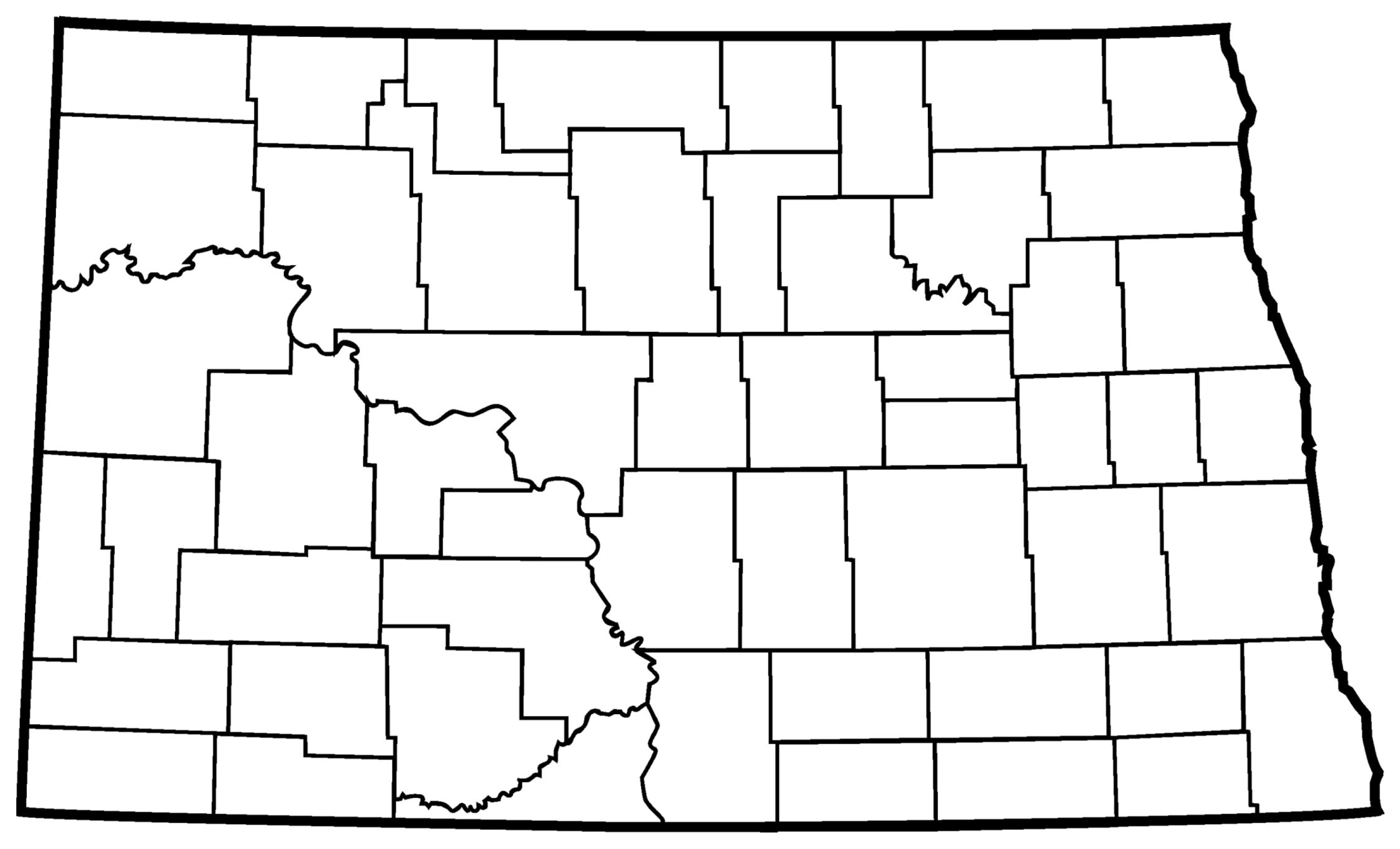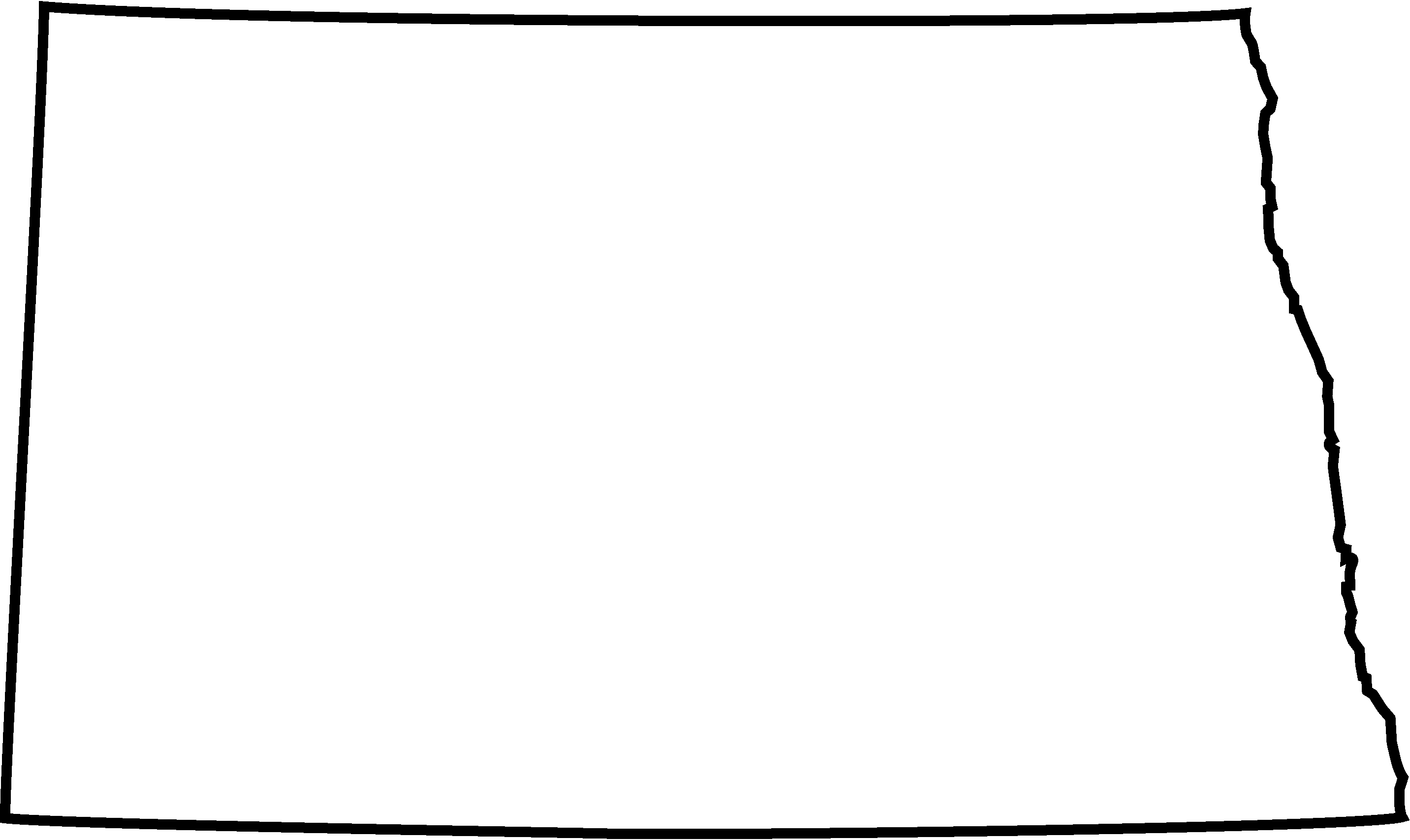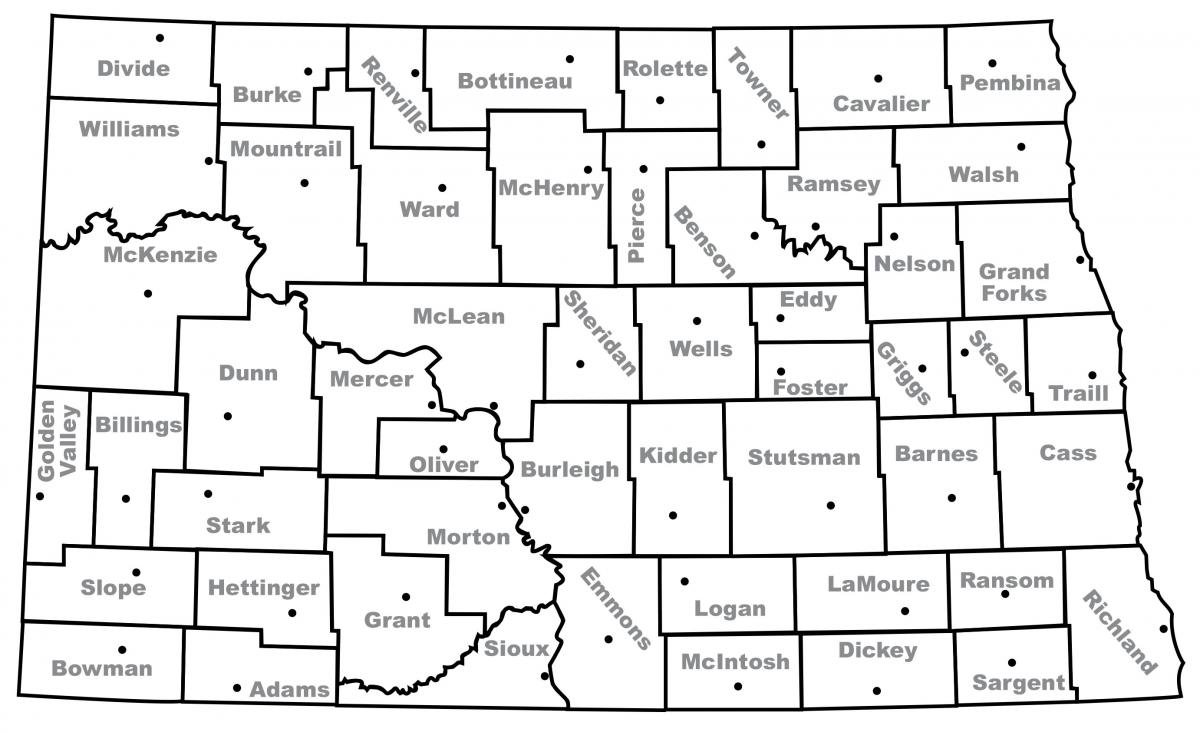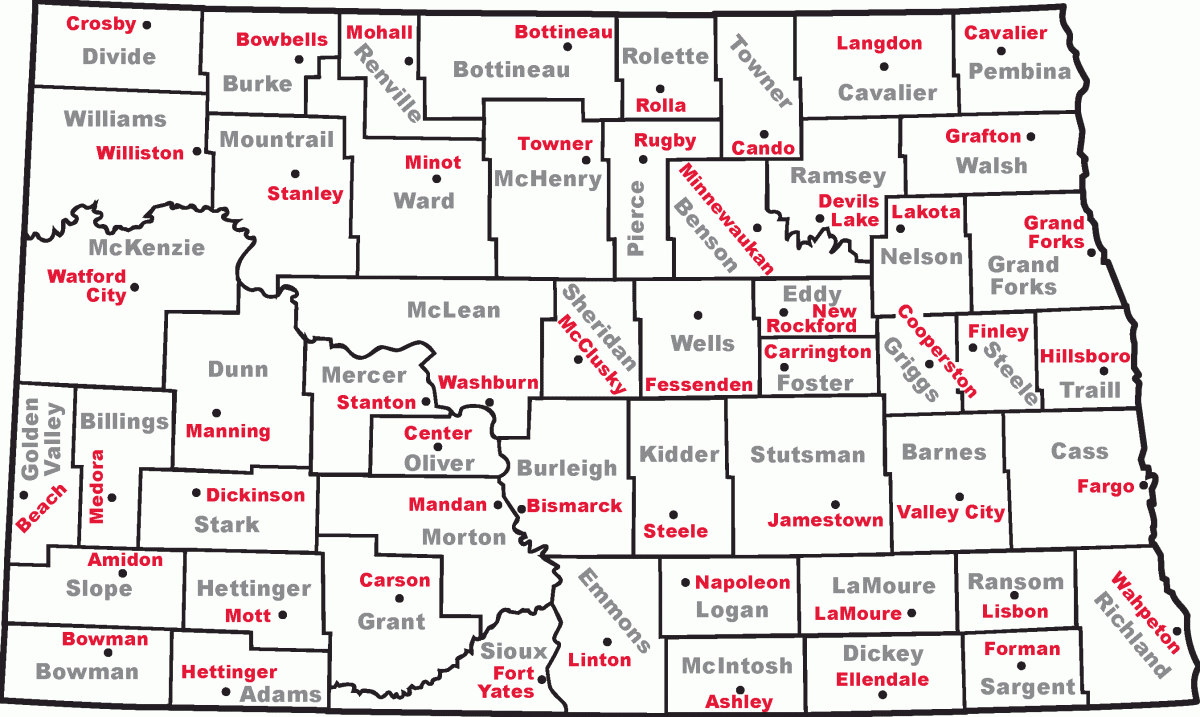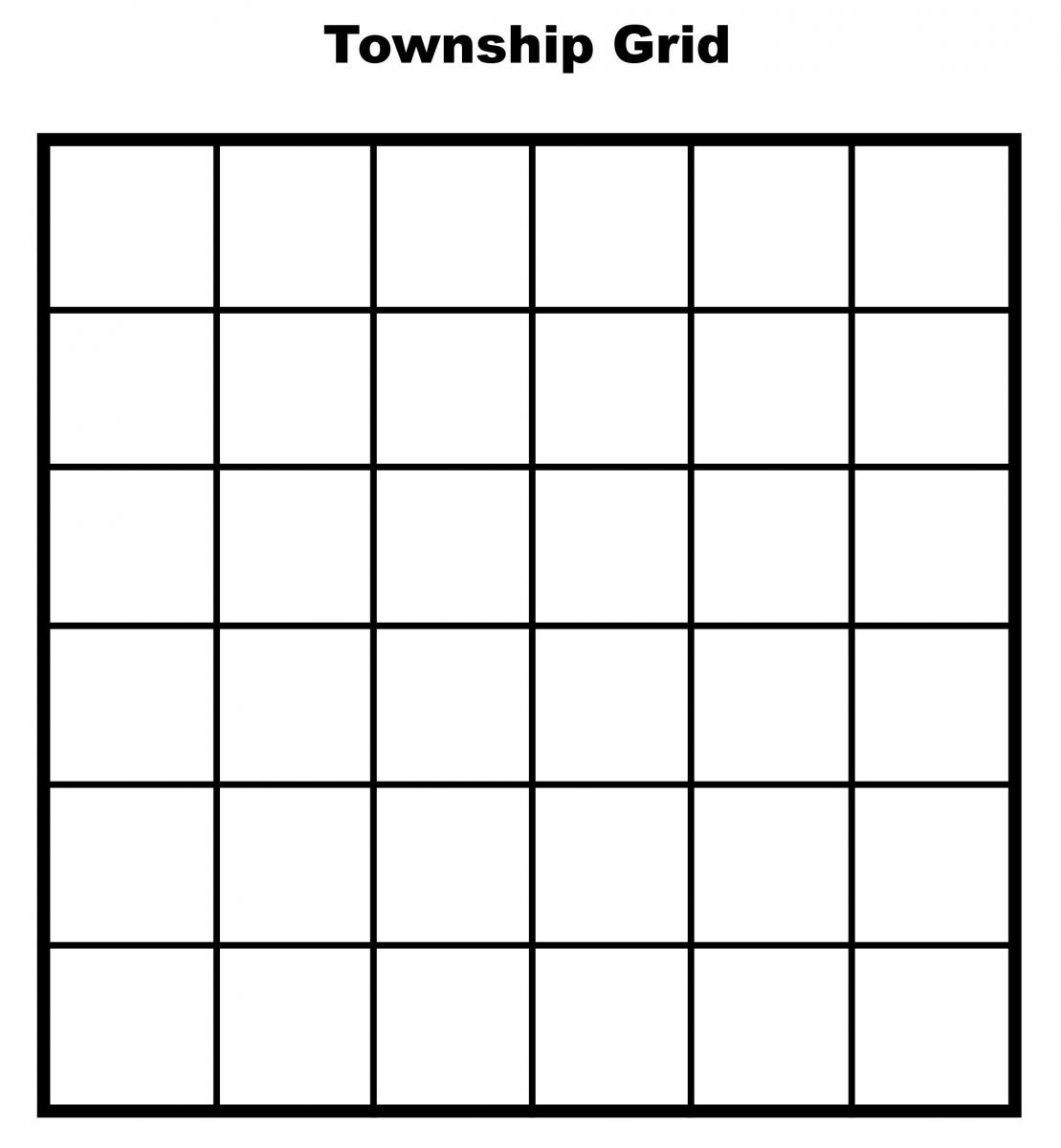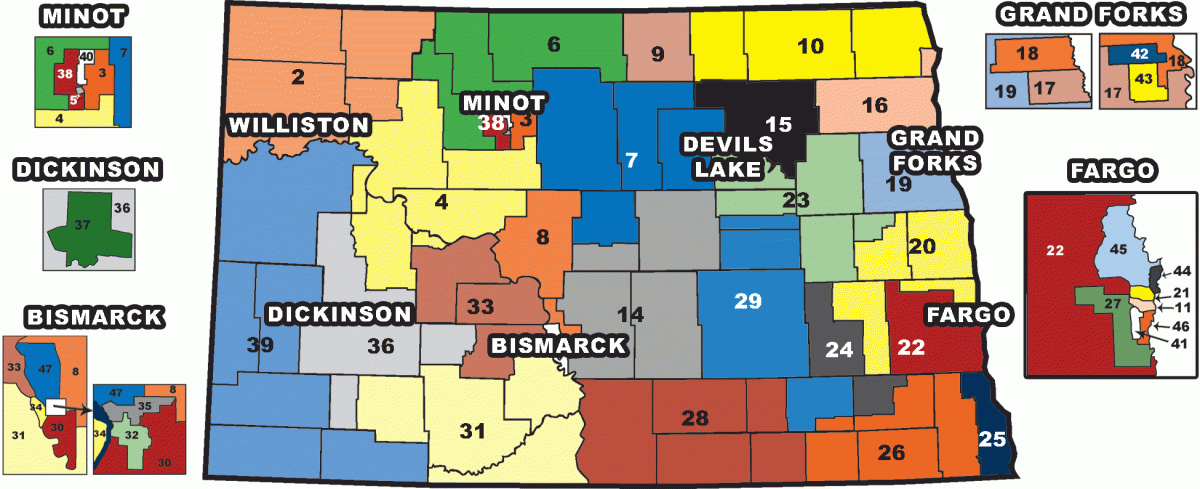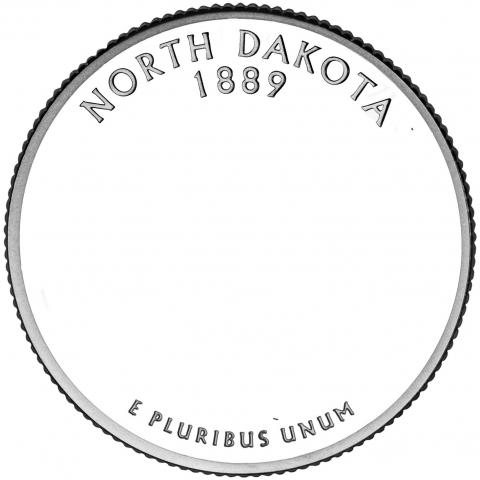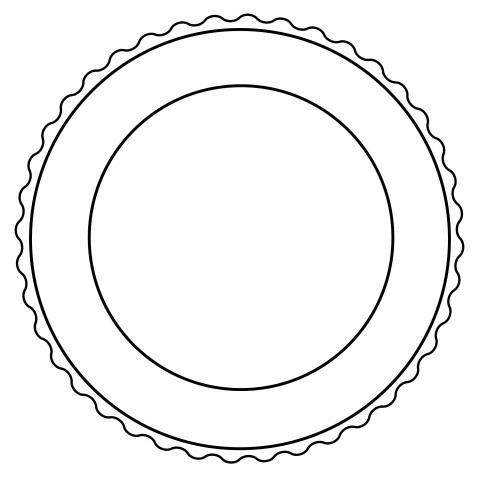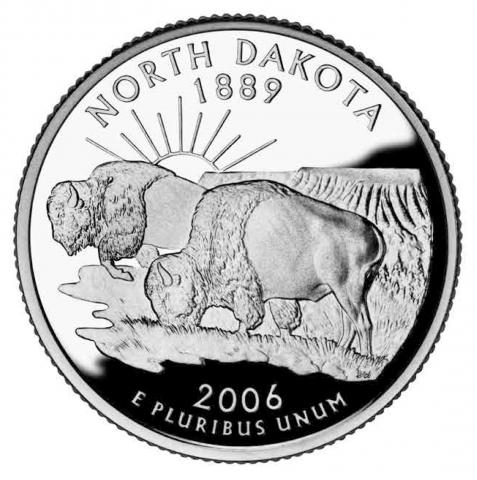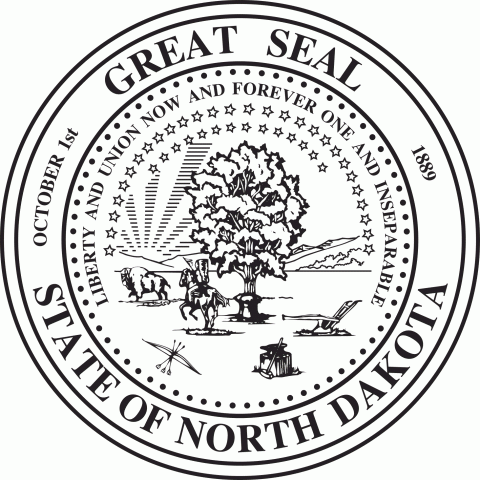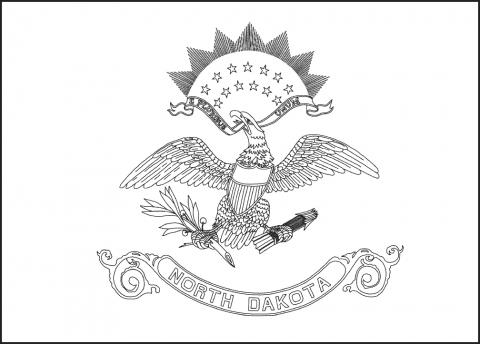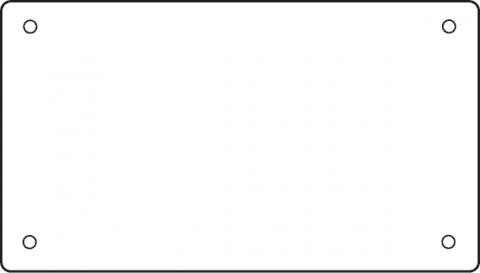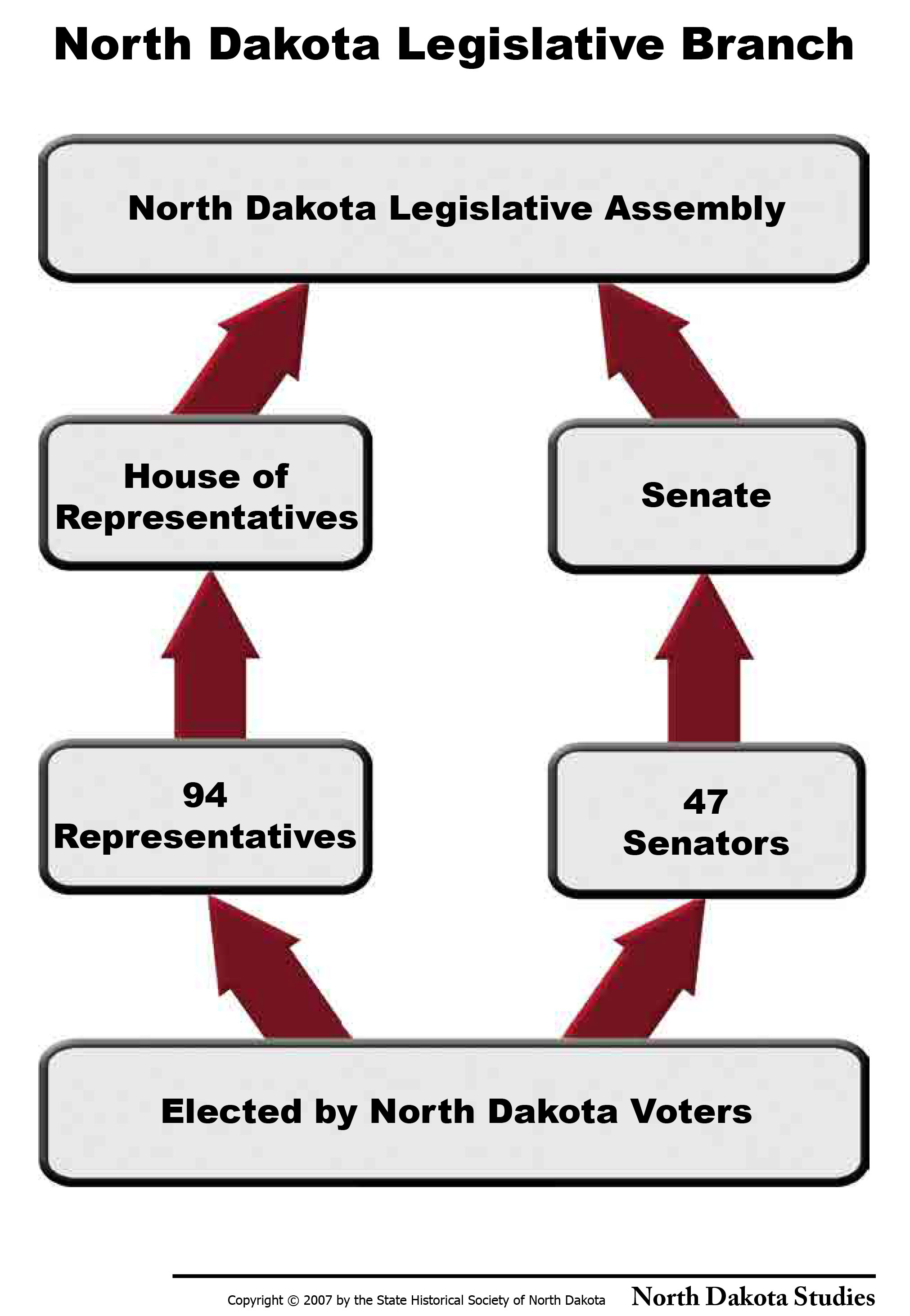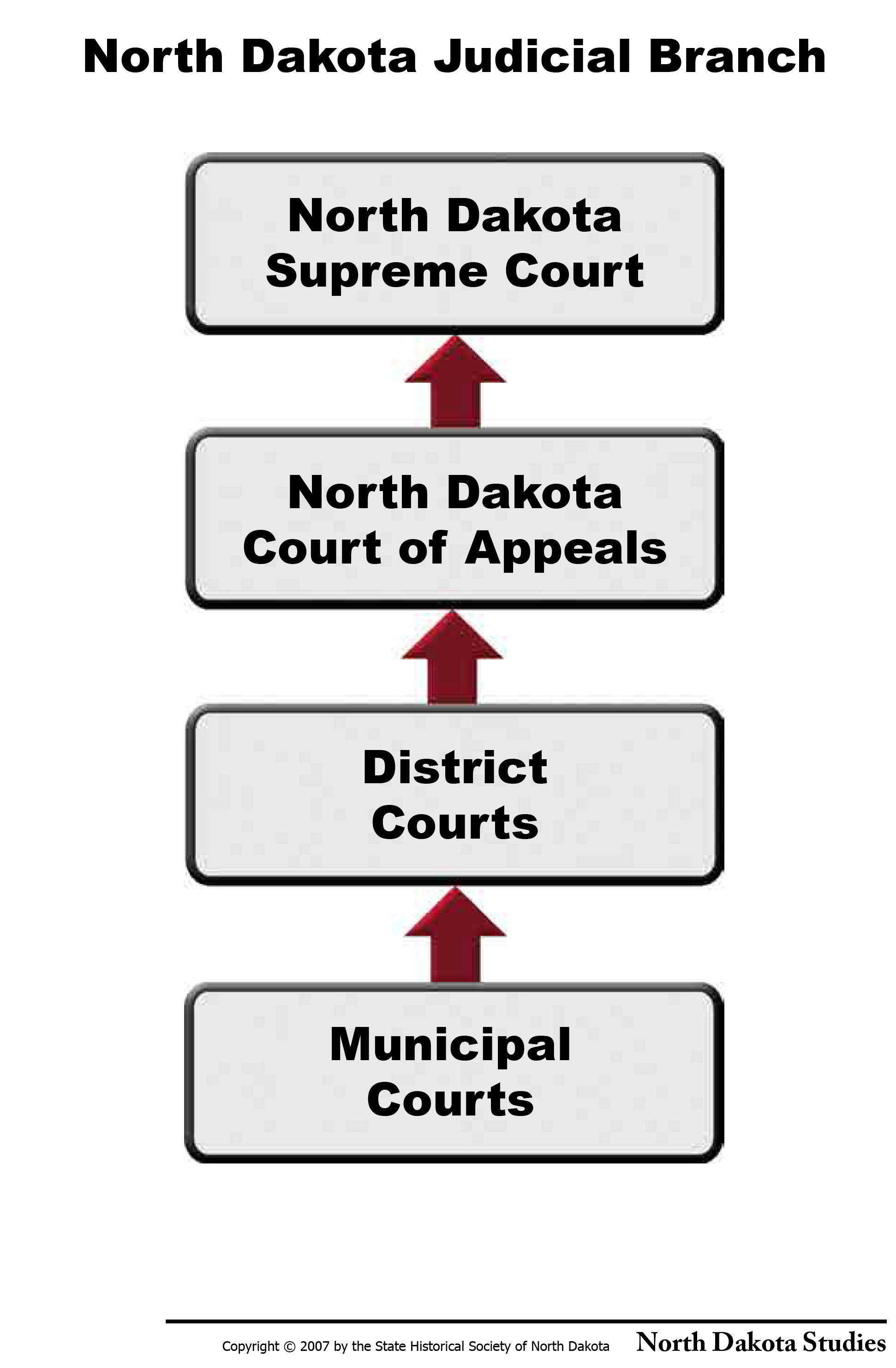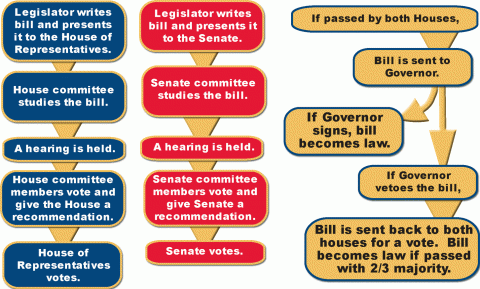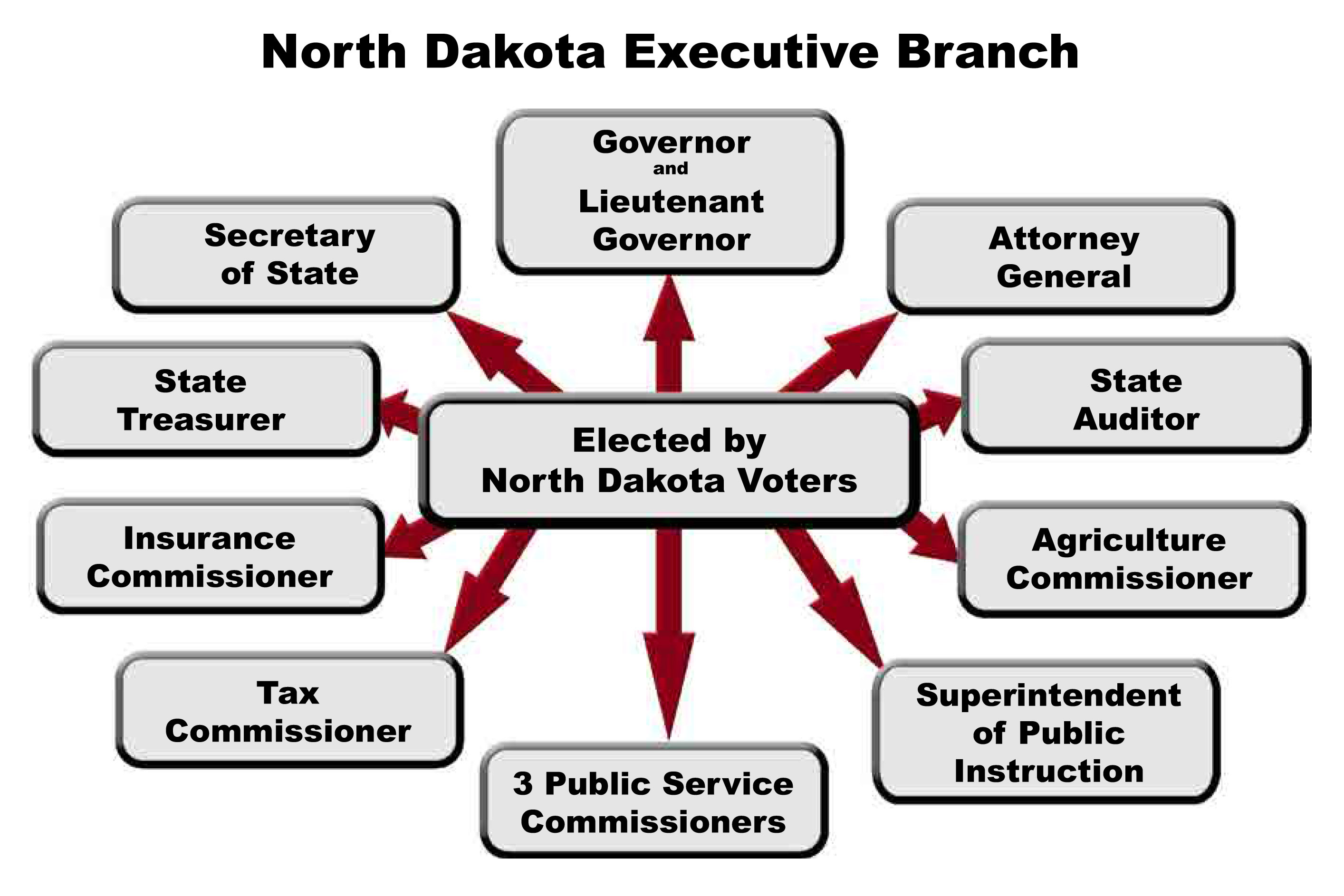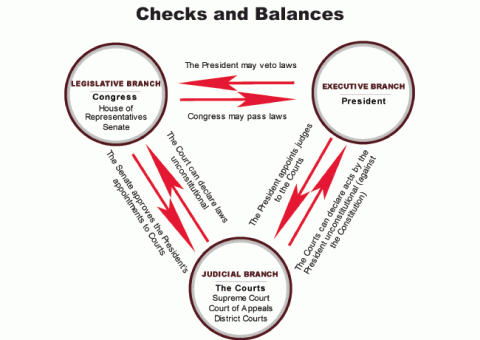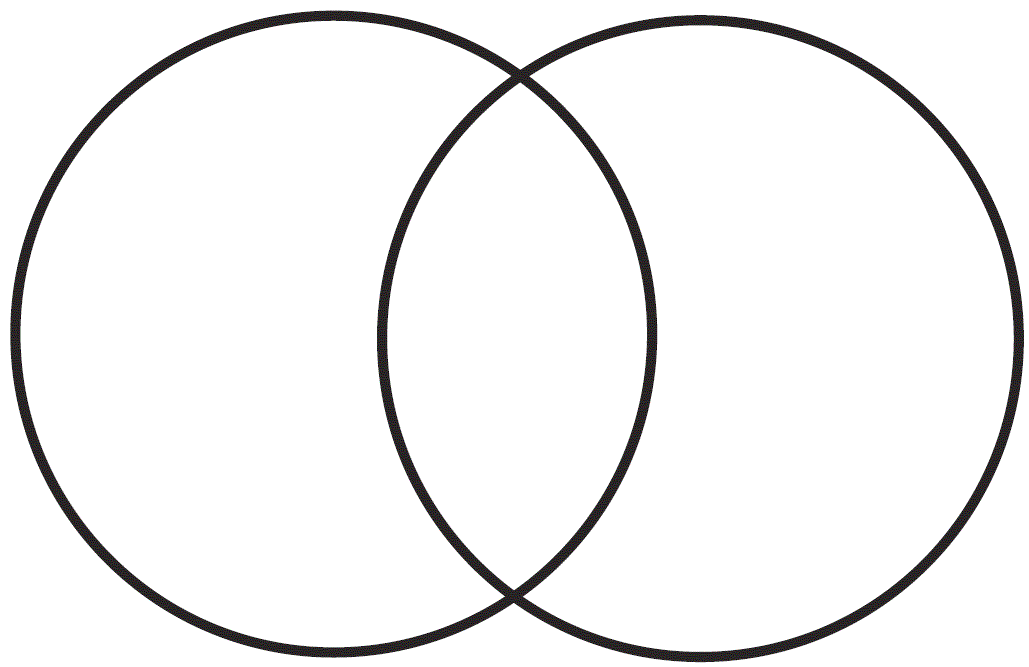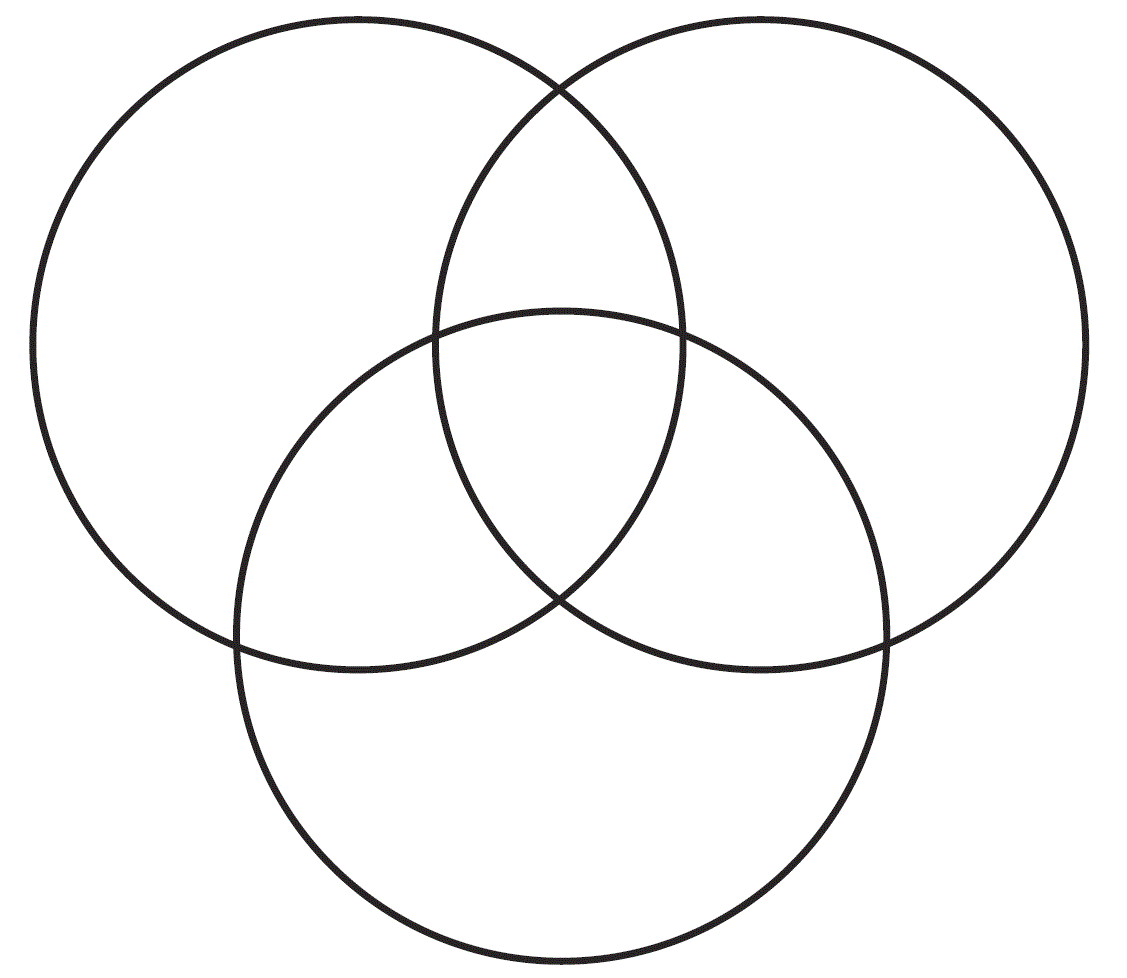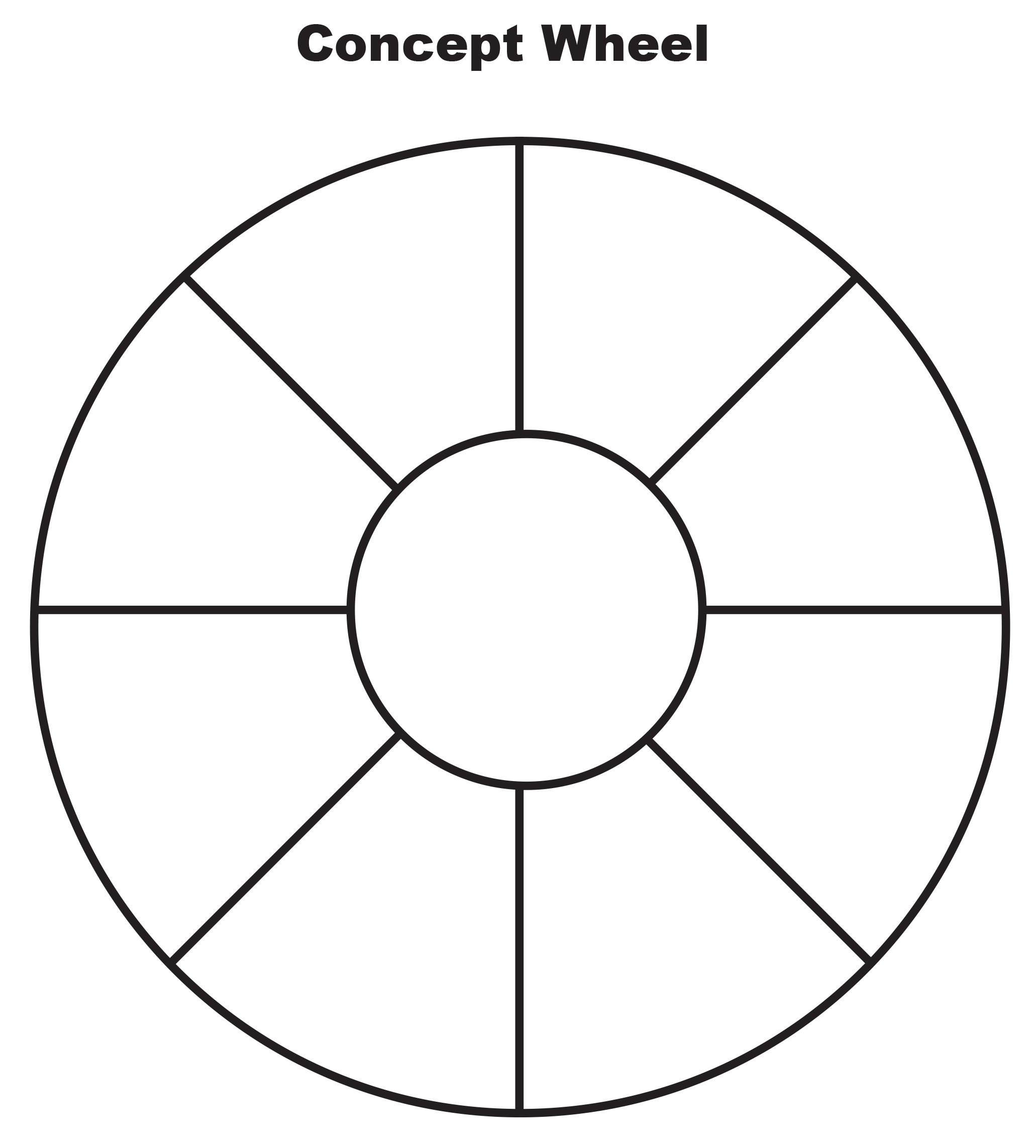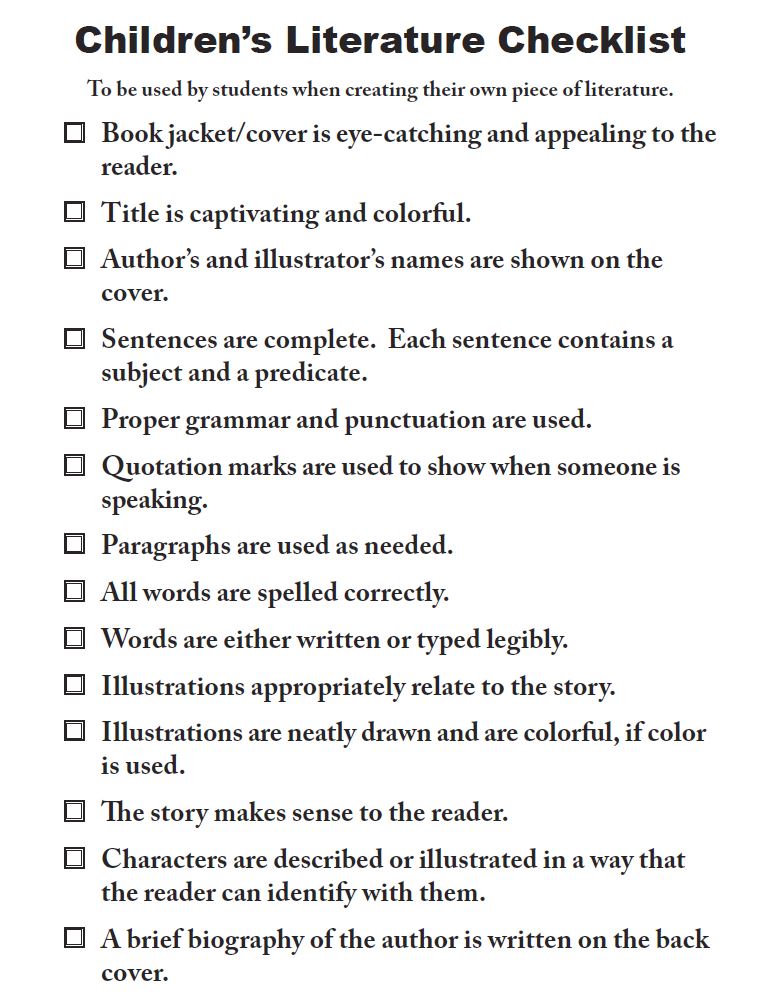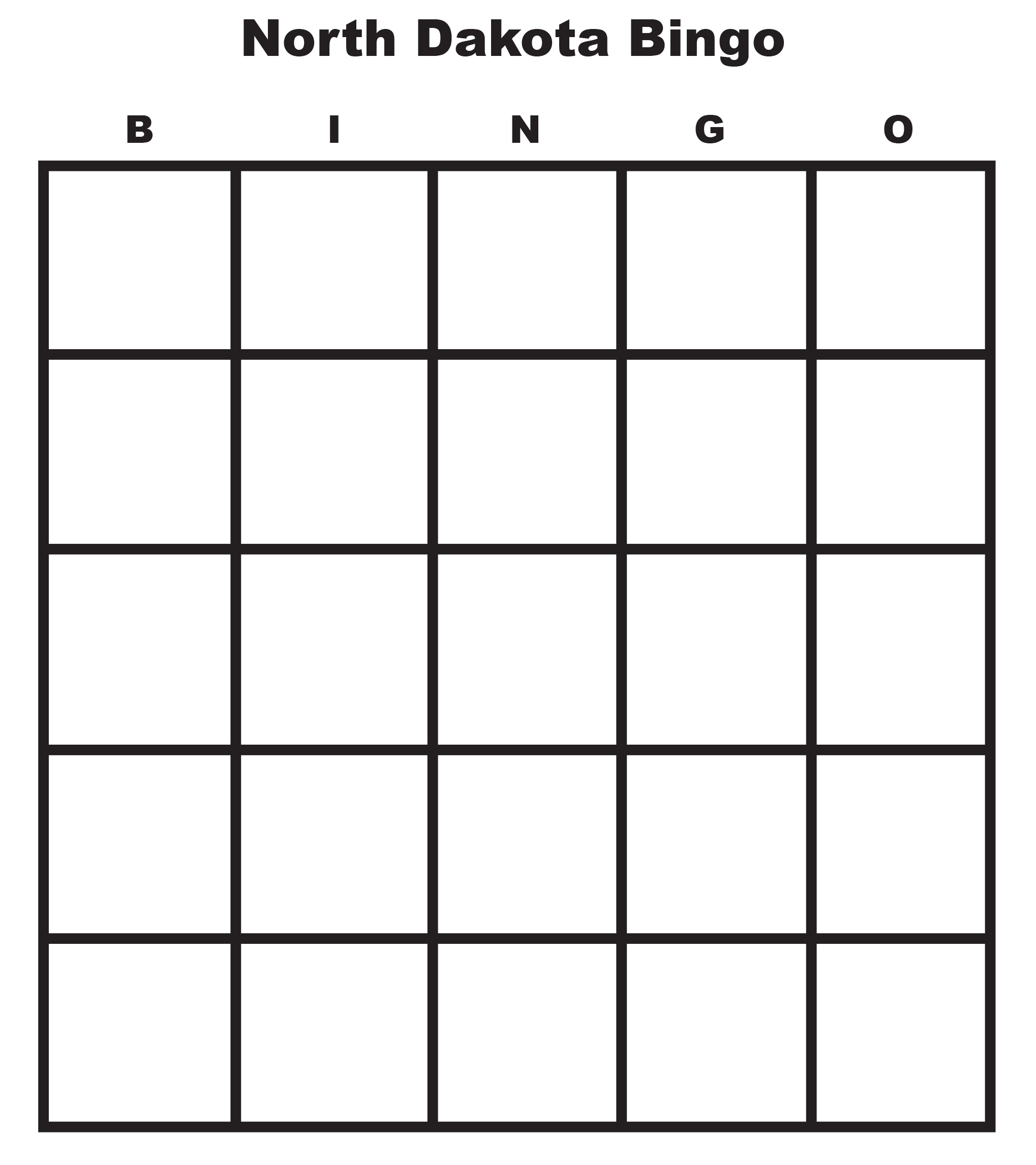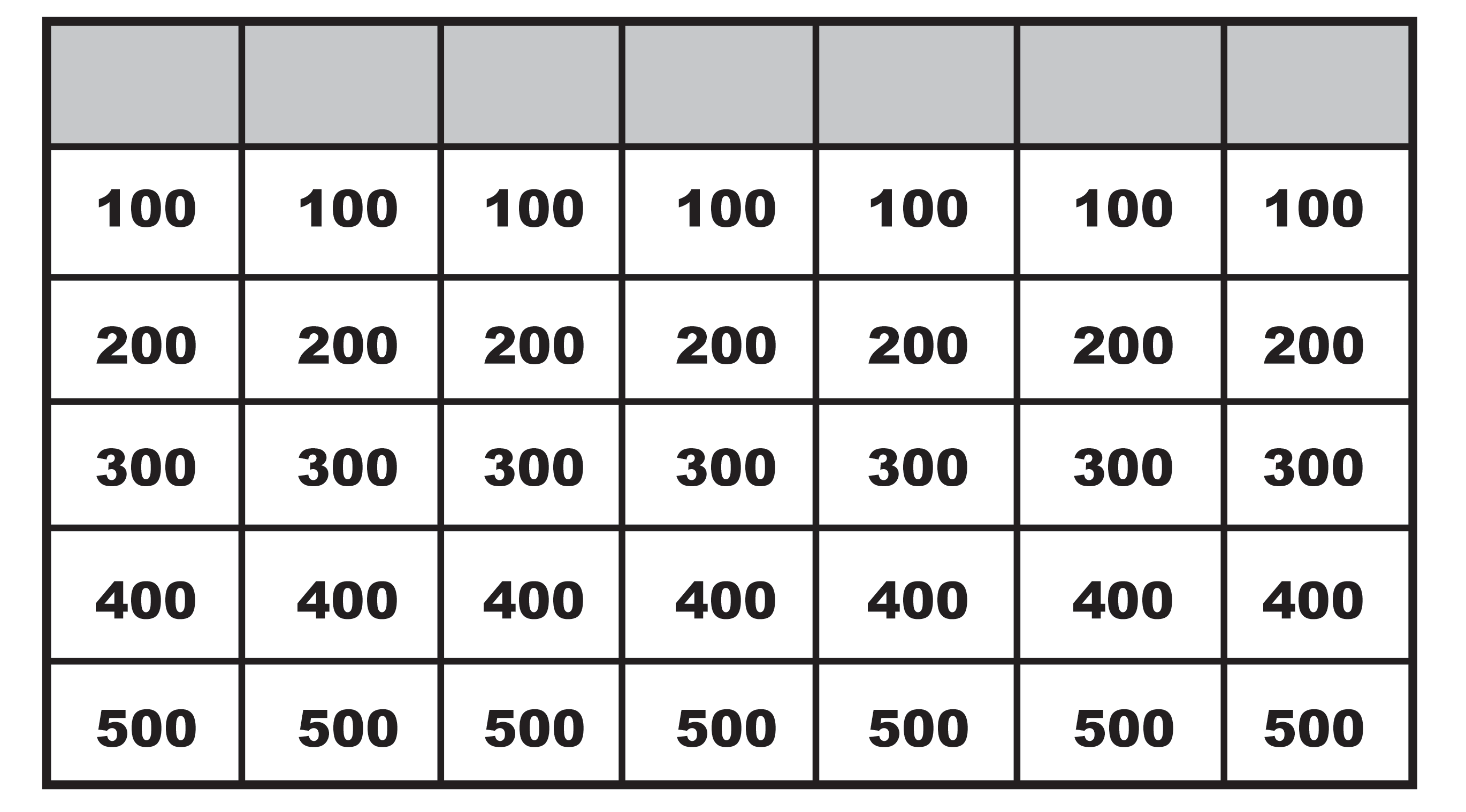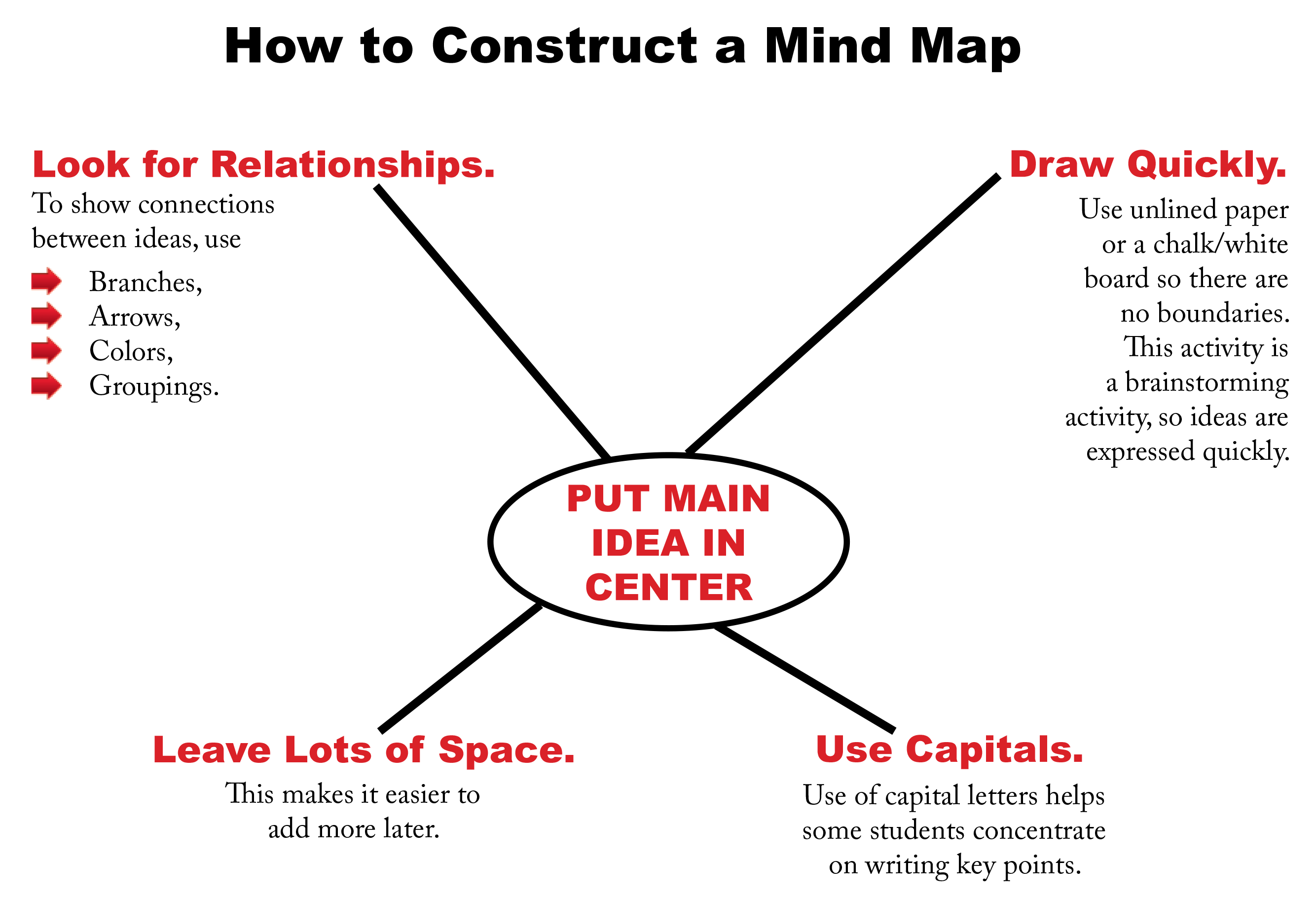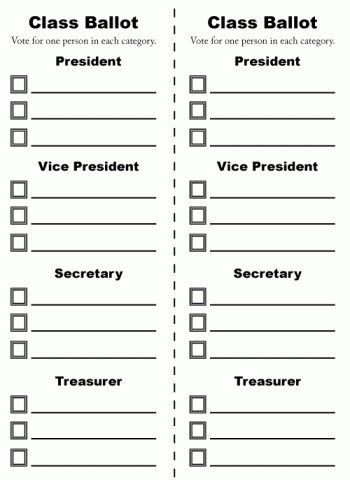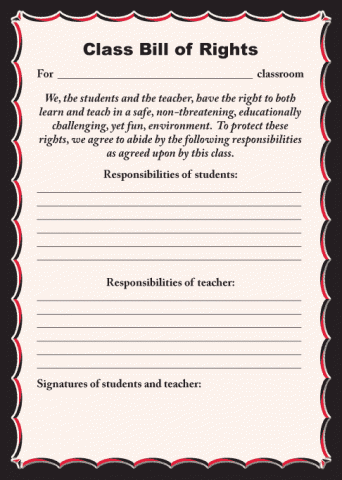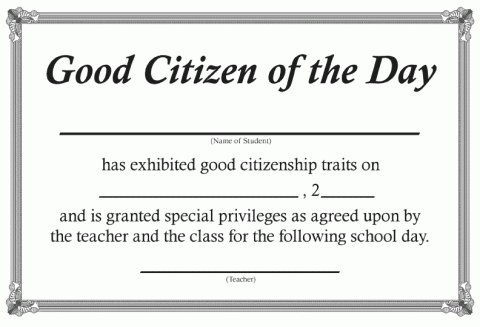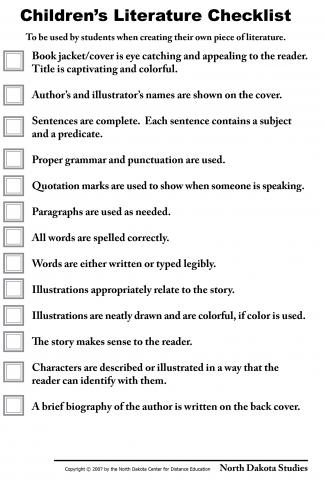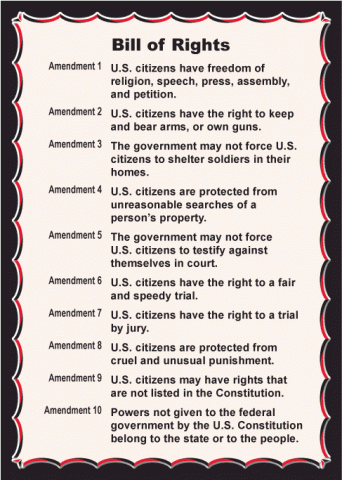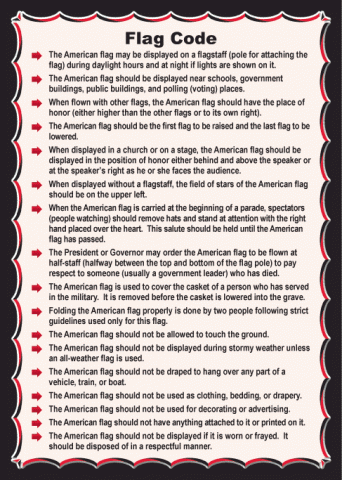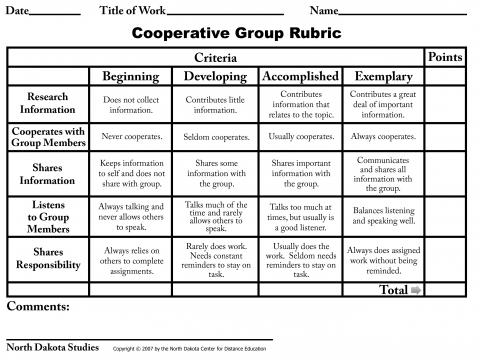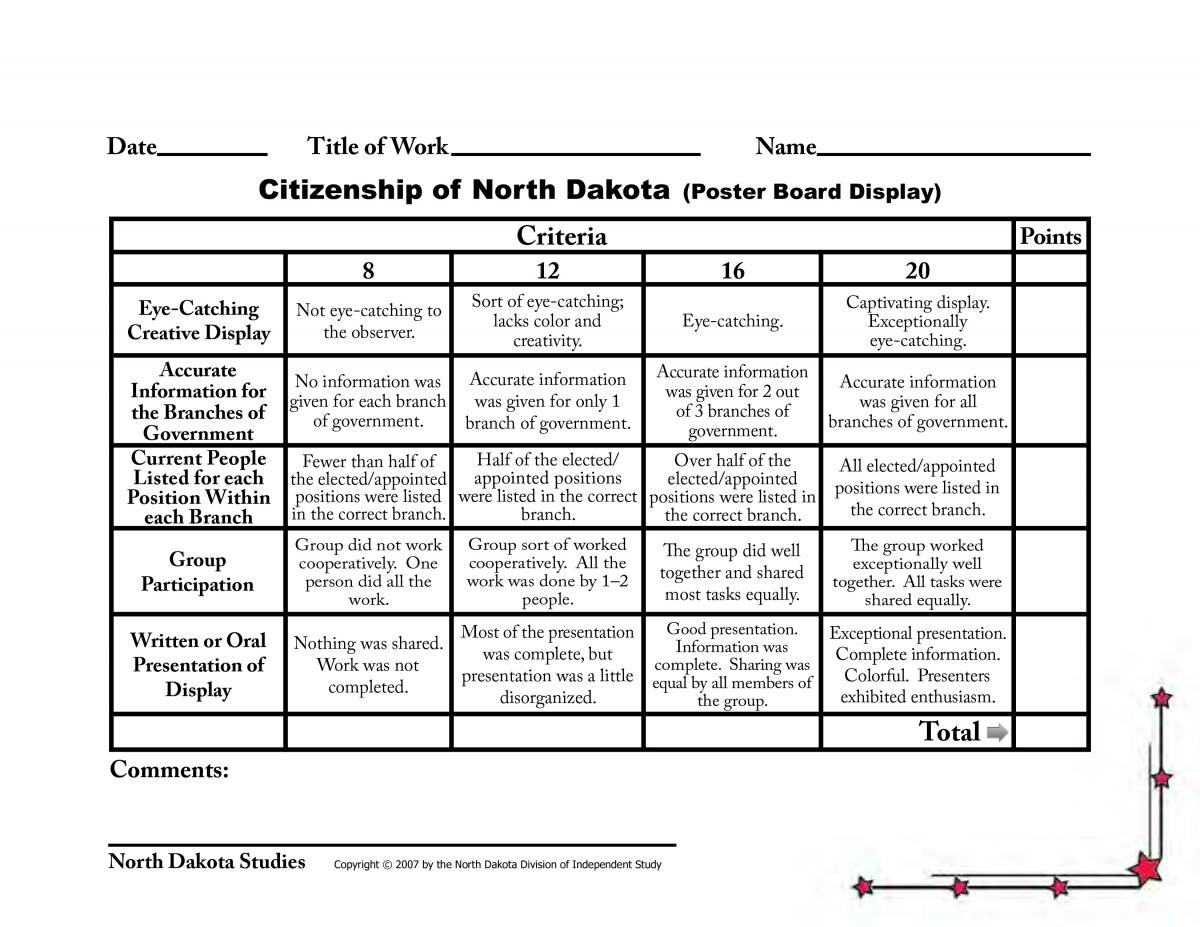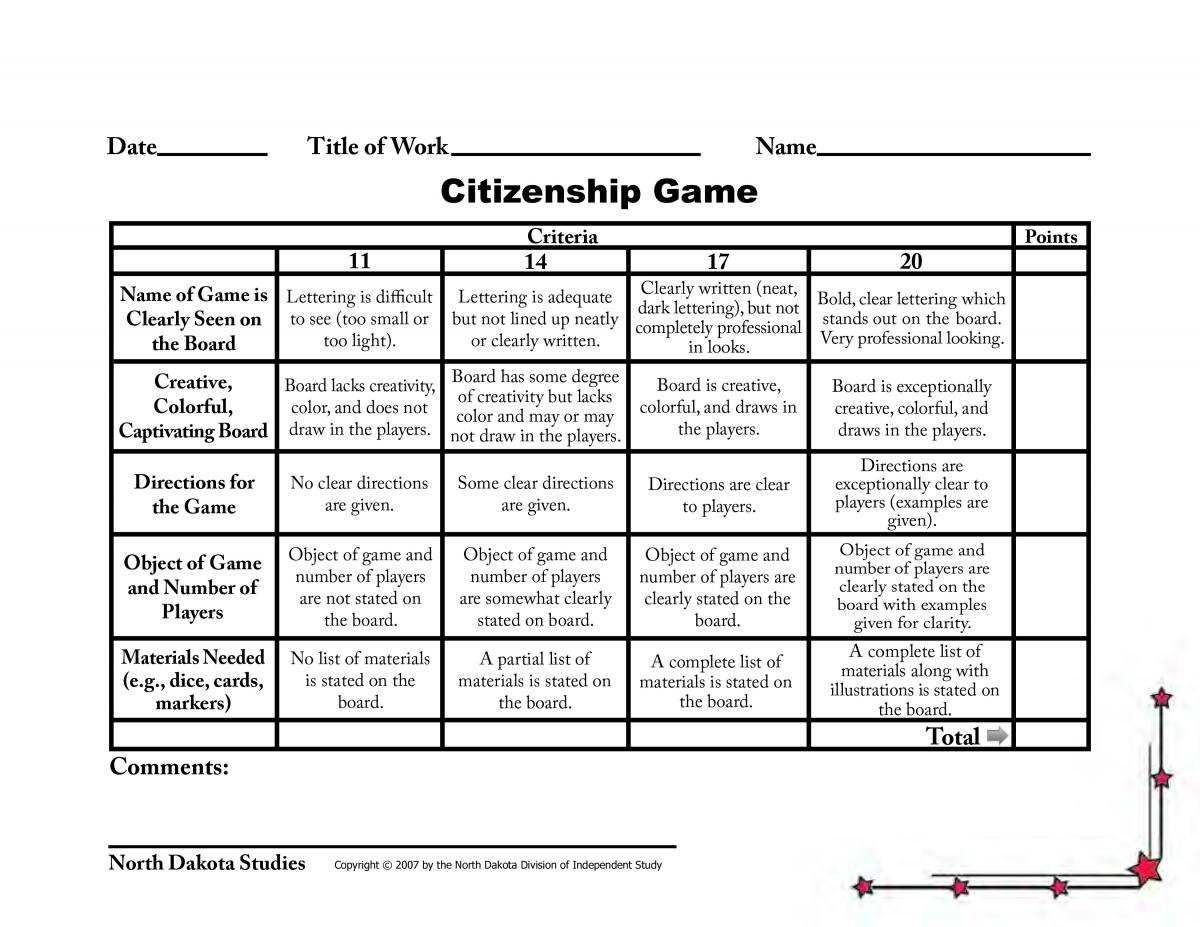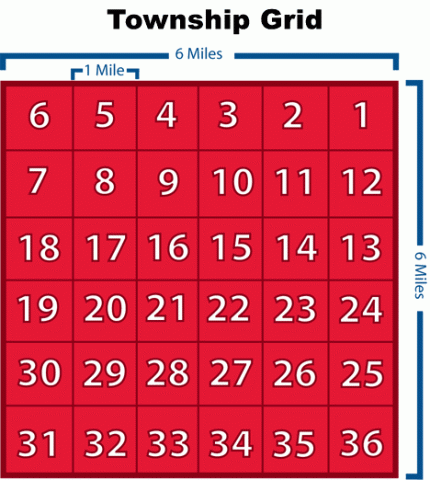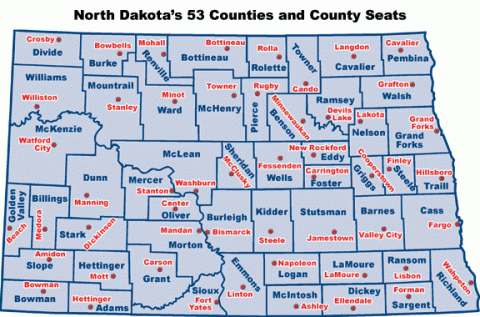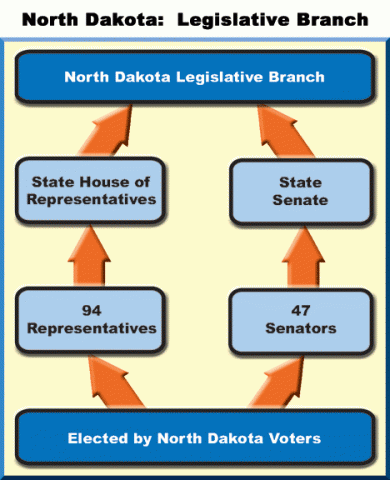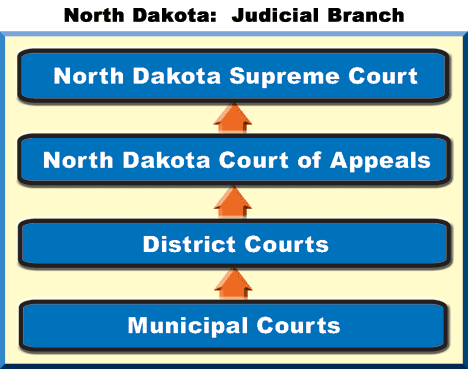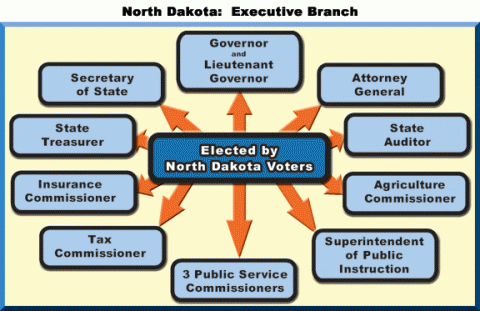Resources
Textbook
Citizenship is a 116-page unit that discusses the role, rights, and responsibilities of North Dakota citizens. Students learn about national, state, and local governments. Students also learn about rights and responsibilities of young citizens, voting, state symbols, and Theodore Roosevelt Roughrider Award recipients.
Teacher Resource Guide
The purpose of this Teacher Resource Guide is to assist the teacher in teaching about Citizenship. It is intended to be interdisciplinary and to act as a guide to supplement other activities that may be used in the classroom. Review and discussion questions, vocabulary, and additional activities are included and available in print and CD-ROM versions of the Teacher Resource Guide for Citizenship.
Bill of Rights
Have students work collaboratively with the teacher in creating a “Bill of Rights” for their classroom (e.g., every student has the right to learn in a safe environment).
Books
Have students create an ABC Alphabet Book on Citizenship (e.g., A = American, B = Bill of Rights, C = Citizen, etc.) Illustrate each page and share it with another classroom or place it in the school library.
Children's Literature Checklist
Have students create a Citizenship Glossary with illustrations and definitions that younger children in lower grades could understand. Have students share with others in the classroom or place it in the school library for use by other students.
Have students create a book or comic book of campaign vocabulary. Include words, definitions, and illustrations.
Branches of Government
Have students use the three-circle Venn Diagram to list the similarities and differences for the three branches of North Dakota government.
- Three-circle Venn Diagram
- Legislative Branch Flow Chart
- Executive Branch Flow Chart
- Judicial Branch Flow Chart
Have students use a Concept Web to study the branches of government of North Dakota and to write characteristics of each branch in one Concept Web. This activity could be assigned to a small group of students and each member of the group would become the expert of one branch. When finished, each member would share the information researched with the other members of the group. To assess group participation and cooperation, use the Cooperative Group Rubric.
Extension: After placing information on a Concept Web, have the students transfer their information from the Concept Web in either narrative or poetry form.
Using a large piece of tag board, have the students create a poster board display demonstrating their knowledge of the branches of government of North Dakota listing the current people representing each position found within each branch. Here is a Poster Board Display rubric for evaluation.
Have students create a hanger mobile portraying the three branches of government.
Citizenship
Have students participate in a range of citizenship and decision-making activities (e.g., circle time, class meetings, school councils, acting as playground helpers, taking part in paired reading, taking responsibility in getting homework and class assignments completed on time, etc.).
Visit with the students at the beginning of the year about what makes a good citizen. Inform them that the teacher will be choosing a Good Citizen of the Day each day based on observations by the teacher showing evidence of sharing, helpfulness, accomplishments, improvements, and doing his/her best. The Good Citizen of the Day will then receive a special certificate giving that student special rights and responsibilities for the next day (e.g., line leader, only student to be able to spend time in a special place in the classroom, room monitor, or whatever the classroom teacher deems special).
Good Citizen of the Day certificate
Have students create/discuss individually, in small groups, or as an entire class a timeline to identify the changes that will take place in their rights and responsibilities between now and when they reach the age of 18. Hopefully, they discover that both rights and responsibilities increase with age.
Have the students create a class citizenship tree where each leaf states a characteristic that makes a person a good citizen.
Have students develop questions that new immigrants would have to know for a citizenship test to become citizens of the United States.
Have students take a sample citizenship test given by government to immigrants. Sample questions can be found at the site listed below.
Have students create a “citizenship box” of one of the traits of a good citizen.
Have students create a class bulletin board entitled “Citizenship City.” Each student will design a house to place on the bulletin board. Each house will be decorated with the student’s name on it. On the bottom of each house, each student will write his/her own “Citizenship Pledge” explaining a way that he/she plans to fulfill community responsibility (e.g., leading a recycling campaign, donating goods to a homeless shelter, etc.).
Have students design a quarter they think would be representative of North Dakota or of themselves as a good citizen. Share with the class.
Think, Pair, Share Activity on the traits of good citizenship. (This technique may be used for any topic.)
Have each student think individually about what traits make a good citizen. Working in pairs, have students share their ideas and thoughts with each other. This enables the teacher to observe what the students’ knowledge is when thinking about the traits needed to be a good citizen. Examples of these traits may include honesty, compassion, respect, courage, perseverance, etc. The students may come up with additional words that define good citizenship traits.
Have each student think of and write down examples from their own lives where they have recognized some or all of these characteristics in themselves.
Students may then share their thoughts or examples from their own experiences with a partner on one or all of the traits by writing down their ideas on the board and/or poster paper for the entire class to see and to discuss. Other ideas for this activity:
- Create a list of ground rules needed for an orderly discussion, and tell why they are needed?
- Create a list of things that make school a good place to be. Then, list what actions each student/class could do to make school a better place for everyone. Create a classroom “Bill of Rights”that would be used as the main discipline plan for the school year (e.g., each person in the class has the right to be treated in a way that he/she would want to be treated).
Constitution
Some people have said the most important words in our Constitution are the first three words of the Preamble, “We the People.” Have students think about this. Have them defend their position.
Debate Ideas
Pros and cons on why everyone’s vote counts.
Which of the responsibilities of young citizens do you consider to be the most important? Be prepared to defend your choice (e.g., obey rules and laws, pay attention to the government and politics, let elected officials know about problems or concerns, encourage adults to vote, make wise choices, volunteer to help others, help with community service, take care of the environment, and be a kind and caring person).
Responsibilities go along with our rights.
Which of the following nicknames given North Dakota (Peace Garden State, Flickertail State, Roughrider State) is the most accurate? Defend your choice.
Can you have rights without responsibilities?
Drawing
Have students use a dictionary to look up “republican” and “Republican” and “democrat” and “Democrat.” Have them draw a cartoon that illustrates how the terms are different.
Have students draw their interpretations of what makes a “good citizen.”
Have students design a North Dakota license plate that they feel would be a good representative of the state.
Flag Activities
Have the students participate in “Raise the Flag Day.” The following site gives several activities for the day.
Have the students create a class brochure related to flag etiquette.
The U.S. flag is red, white, and blue in color with stars and stripes. Each color has a different meaning. White signifies purity and innocence, red signifies valor and bravery, and blue signifies vigilance, perseverance, and justice.
- Have students look up each of these words and find synonyms for each of these words in a thesaurus.
- Have the students create a poster of the United States flag showing evidence of their knowledge of the parts and colors of the flag.
- Extension: Research the origin of the North Dakota state flag and the significance of its symbols and colors.
Have students perform a Reader’s Theatre where one group reads one word or phrase from the Pledge of Allegiance and the other group reads the meaning of the word or phrase.
Have the students look at the North Dakota flag and sketch it using colored chalk. Laminate the final product for display in the classroom. Before drawing the flag, have them read the description. It is as follows:
| North Dakota Flag Description |
|---|
| North Dakota’s dark blue field displays a bald eagle holding an olive branch and a bundle of arrows in its claws. In its beak, the eagle carries a ribbon with the words “One nation made up of many states.” The shield on its breast has thirteen stars, representing the original thirteen states. The fan-shaped design above the eagle represents the birth of a new nation, the United States. The name “NORTH DAKOTA” appears on a red scroll below the eagle. |
When the drawing is completed, have partners read the description to each other to see if the directions were followed according to the description written. For students with special needs, you can use the
North Dakota flag coloring page.
Games
Have students create a Citizenship Board Game to show their knowledge of any area of citizenship. A rubric is provided.
Have students play these games using questions from the text: BINGO, Jeopardy, Wheel of Fortune, Trivial Pursuit, etc. The site listed below is a wonderful site with templates, directions, and examples of Jeopardy, Who Wants To Be A Millionaire, or Hollywood Squares by using PowerPoint.) Suggested categories: Branches of Government; Robert's Rules of Order; Symbols of North Dakota; and Roles, Rights, and Responsibilities of Citizens.
Citizenship of North Dakota Bingo—Have students fill in the blank boxes with citizenship words provided. Have a list of words created along with the definition and cut them into small pieces. The caller will select a card, read the definition, and the students will place a marker on the word that matches the definition. When BINGO is called, the student must read the word and give the definition before it is counted.
Note: This can be used as an assessment tool.
Graphic Organizers
CHARACTER COUNTS includes the six pillars of character (i.e., Trustworthiness, Respect, Responsibility, Fairness, Caring, and Citizenship). Have students, either working with a partner or in a small group, graphically organize each of these pillars, listing as many characteristics of each pillar as they can think of or find through research.
Have students create a mind map for each of the branches of government (legislative, executive, and judicial) that includes officials and their duties.
Have students create a flow chart either on tagboard or electronically on How a Bill Becomes a Law using the following sites for guidance:
Have students draw a diagram showing their understanding of how the separation of powers and checks and balances work.
Have students create a mind map including officials and their duties for state, county, city, and tribal governments.
Map Skills
Have students use a North Dakota map to indicate the location of each of the county courthouses of North Dakota.
Using a large U.S. map where each state is cut out, have students select a state(s) so all 50 states in the United States are represented. Students will write a personal trait of theirs related to being a good citizen on their state(s), cut out and place it either on a poster board or on a bulletin board in the correct location on the map. The students will then discuss how each of the traits is important in helping make the world a better place in which to live. Partner a student with another student who has a different trait or gift. Have them together research how to transform these talents into action through an act of volunteering. Each pair will present its findings to the class.
Montage/Collage
Using the six democratic virtues of responsibility, civility, courage, fairness (justice), honesty, and being lawful, have each student make a poster montage or collage depicting the application of the six democratic virtues in his/her own life. Use a variety of sources to compile pictures, illustrations, photos, etc.
"North Dakota Hymn"
"North Dakota Hymn"
North Dakota has a state hymn written by James W. Foley and arranged by Dr. C. S. Putnam. Do they think these words are still appropriate for North Dakotans today? Explain. Ask the students if they were to write a new North Dakota Hymn, what words would they write to tell about North Dakota?
| "North Dakota Hymn" |
|---|
|
North Dakota, North Dakota
With thy prairies wide and free, All thy sons and daughters love thee, Fairest state from sea to sea; North Dakota, North Dakota, Here we pledge ourselves to thee. North Dakota, North Dakota, Here we pledge ourselves to thee. Hear thy loyal children singing, Songs of happiness and praise, Far and long the echoes ringing Through the vastness of thy ways— North Dakota, North Dakota, We will serve thee all our days. North Dakota, North Dakota, We will serve thee all our days. |
Parliamentary Procedure
Have students role play any section of Robert's Rules of Order to better learn correct parliamentary procedure.
Have students write and illustrate a book, a comic book, or a set of cartoons on basic parliamentary procedures.
Children's Literature Checklist
Have the students run a weekly class meeting in which the classroom officers and helpers for the following week will be elected, as well as work on any unfinished or new business the class has to act upon (e.g., field trips, assemblies, etc.). After studying correct parliamentary procedure on how to run a business meeting, have the students create a general parliamentary procedure rule book from which to conduct the weekly meetings. The order of the meeting would be as follows:
- Call to order
- Reading of the minutes
- Election of new officers and helpers for the following week
- Unfinished business
- New business
- Adjournment
Students nominate and vote on a president (runs the meeting according to parliamentary procedure), vice president (writes the names of students nominated for each position on the board to be voted upon by the rest of the class and takes over duties of the president if the president is absent), and secretary (takes minutes of the meeting and writes the nominees and winner of each position in the secretary's book) by a show of hands with heads down. Classroom helpers are then nominated and elected in the same manner as the class officers. Typical classroom helpers might include gopher (does errands for the teacher), papers (hands out papers), desk inspectors (maintains neatness and orderliness of desks), librarian (keeps the classroom library orderly), board cleaner (cleans the boards in the classroom), etc.
NOTE: Every student in the class has to have been in each of these positions first before students can be re-elected to a position they have had before (e.g., if Sally had already been president, she cannot be re-elected to this position until everyone in the class had been president first. The secretary's minutes will provide evidence for the class). Post the names next to their designated positions in a prominent place in the classroom until the following week.
Poetry
Have students create poetry corresponding to the North Dakota Studies unit they are studying:
Couplets (two-line stanza that rhymes).
Triplets (three-line poems). A triplet may be written in the shape of a triangle and can be read by starting at any corner.
- Patterns include ABB (two of the lines rhyme)
- AAA (all three lines rhyme)
- ABC (no lines rhyme)
Haiku
- Line 1—five syllables
- Line 2—seven syllables
- Line 3—five syllables
Cinquain
- Line 1—one word (title)
- Line 2—two words (describe the title)
- Line 3—three words (describe an action)
- Line 4—four words (describe a feeling)
- Line 5—one word (refer back to the title)
Diamanté (Diamond)
- Line 1—one noun (subject #1)
- Line 2—two adjectives (describing subject #1)
- Line 3—three participles (ending in –ing, telling about subject)
- Line 4—four nouns (first two related to subject #1, second two related to subject #2)
- Line 5—three participles (about subject #2)
- Line 6—two adjectives (describing subject #2)
- Line 7—one noun (subject #2)
ABC Poetry (Start with A and go through the alphabet writing a word for each letter. You may make several sentences, but the information should be about North Dakota.)
Acrostic Poems (The first letters of the line spell out a word that has something to do with the poem.)
Lanterns (Japanese poem that is written in the shape of a Japanese lantern).
- Line 1—one syllable
- Line 2—two syllables
- Line 3—three syllables
- Line 4—four syllables
- Line 5—one syllable
Posters
Have students create a poster that shows some rights of citizens and responsibilities those rights carry.
Have students design a poster that shows how they are engaged in good citizenship. Share with the class.
Have students create a poster that shows how they can promote the common good in their school or community.
Have students make a poster encouraging people to vote, especially 18 to 20 year olds.
Have students complete the Class Bill of Rights activity.
PowerPoint/iMovie
Have students create a PowerPoint or iMovie slideshow on any aspect of citizenship.
Small Groups
Have students create a "desert island" scenario in which a group of people has been thrown together in difficult circumstances and have to cooperate and become a community to survive. Working in small groups, have the students discuss, role-play, or use puppetry to answer the following questions:
- What is a community?
- What are rights?
- What are responsibilities?
- What is fairness?
- What is democracy?
Have students divide into four groups, each group representing one of the four parts of freedom of expression (i.e., speech, religion, press, gathering in groups). Each group will share one of these freedoms in a creative way to show understanding of their assigned freedom (e.g., poster, diagram, play, slide show, etc.).
Symbols
Have students develop a North Dakota bookmark based on the state symbols.
Have students create a book of North Dakota's symbols, emblems, and mascots and give a brief explanation of each.
Have students create a seal representing their school community.
Have students design a flag representing their own life and culture based on citizenship values.
Before introducing the Great Seal of North Dakota to the students, have them each visualize, make a list of, and create what he/she thinks should be contained in the Great Seal of North Dakota. Then, work on the first two journal ideas below. Have the students reflect on their drawings. Were their ideas similar? What did they include on their original design that was not on the Great Seal? Discuss with a partner, small group, or entire class the importance and significance of symbols and what they can represent.
Find words that relate to any of the symbols used in North Dakota. What do each of these words mean to you, and why do you think they are an important part of our state's history?
Have students reflect on the description of the Great Seal of North Dakota (description appears below). What do they like about it? What would they keep the same? Change?
Partner students and have one read the description of the Great Seal while the other student draws what she/he hears. Share the drawing. This is a great listening activity while enhancing the visual-spatial intelligence of the students. The description for the Great Seal follows.
| Great Seal Description |
|---|
| A tree in the open field, the trunk of which is surrounded by three bundles of wheat; on the right a plow, anvil and sledge; on the left, a bow crossed with three arrows, and an Indian on horseback pursuing a bison toward the setting sun; the foliage of the tree arched by a half circle of forty-two stars, surrounded by the motto "Liberty and Union Now and Forever, One and Inseparable"; the words "Great Seal" at the top; the words "State of North Dakota" at the bottom; "October 1st" on the left and "1889" on the right. |
Vocabulary
The vocabulary cards in the Citizenship Teacher Resource Guide may be enlarged or reprinted on card stock. Laminating the vocabulary cards will make them more durable and long-lasting. Additional vocabulary can be found in the Student Text. These words may be used for reviewing (e.g., Trivia, Jeopardy, or a student-created game board, poster board, etc.). The sky is the limit for the uses of these words! Several suggestions follow.
Create word games, word searches, mazes, crack the code, etc.
Use the Citizenship vocabulary words as spelling words. Have students write each word in a complete sentence that would tell the reader its meaning through context.
Students may partner and give each other a spelling test (written and/or oral).
Writing Activities
- The United States is sometimes referred to as a “nation of immigrants,” a “salad bowl,” or “melting pot.” Ask students to think about these questions. What do these terms mean to you? How has immigration affected you in North Dakota? Should North Dakota continue to open its state to immigrants who want to settle here?
- Have students write thoughts on “What it means to be an American.”
- Have students write a story about what can happen in a community where people do not exercise their responsibilities to be good citizens.
- Suppose that we did not have a national government. Each state would be a separate country (e.g., have its own army, its own money, etc.). Have students make a list of problems that might occur in this situation.
- Have students write a story with the title “Every Vote Counts.” In the story, have them show how just one person’s vote can make a difference.
- Ask students to think about these questions. Why does the United States and each of the 50 states, including North Dakota, have a flag? What does the flag represent? What does the eagle represent to you?
- Have students research and write a biography of someone serving in state or local government in North Dakota. Have them find out as much information as they can about this elected individual. A classroom bulletin board can be created entitled “Elected Officials of North Dakota.”
Branches of Government
Ben's Guide to US Government for Kids
Legislative Branch
North Dakota Legislative Branch gives information on the legislative branch of government, how a bill becomes a law, representatives and senators, how to testify in front of a committee, etc. Very informative!
Executive Branch
Ben's Guide to US Government for Kids
Judicial Branch
Discipline Plans
Discipline Plans and Class Meetings
Classroom discipline plans and class meetings may be used as a vehicle to model the characteristics of good citizenship, the use of sound parliamentary procedure, the responsibilities and rights available when given choices, and the various roles of citizenship. Although there are several discipline plans that build on sound citizenship practices, only a few follow:
Election Process
Ben's Guide to US Government for Kids
Tours
nd.gov site lists the stops made on a tour of the State Capitol.
Symbols
Parliamentary Procedure
National Association of Parliamentarians
Teaching Tips
Literature for Classroom Use
Great Books for Social, Personal, and Health Education, and Citizenship. Topics include: developing confidence, responsibility, belonging to groups and communities, role as citizens, taking care of animals and the environment, respecting differences, etc. can be found at Random House.
| Authors | Titles |
| N/A | Symbols of the U.S. Government: Ben’s Activity Book ISBN: 0160723019 |
| Jo Bannatyne-Cugnet | From Far and Wide: A Canadian Citizenship Scrapbook |
| Fred Bratman | Becoming a Citizen: Adopting a New Home |
| Angela Catalano | Community Spirit: Symbols of Citizenship in Communities |
| Sarah De Capua | Becoming a Citizen (True Book) |
| Robin S. Doak | Citizenship |
| John Hamilton | Becoming a Citizen (Government in Action!) |
| Branches of Government (Government in Action!) | |
| Ellen Keller | Kids Are Citizens (National Geographic Reading Expeditions) |
| Cindy Leaney | Everyone Makes a Difference: A Story about Community |
| Suzanne Levert | State Government |
| Nancy Loewen | We Live Here Too: Kids Talk About Good Citizenship (Kids Talk) |
| Sue Pearson | Tools for Citizenship and Life: Using the Lifelong Guidelines and Life Skills in Your Classroom |
| Janet Riehecky, Madonna M. Murphy | Citizenship (First Facts) |
| Mary Elizabeth Salzmann | I Am a Good Citizen (Building Character) |
| Frances Shuker-Haines | Rights and Responsibilities: Using Your Freedom |
| Mary Small, Stacey Previn | Being A Good Citizen (Way to Be!) |
| Susan Watson | Improving the Quality of Life (Global Citizenship) |
| Understanding Human Rights | |
| Being Active Citizens | |
| Respecting Cultural Differences | |
| Louis Zachary | Class President |
<
